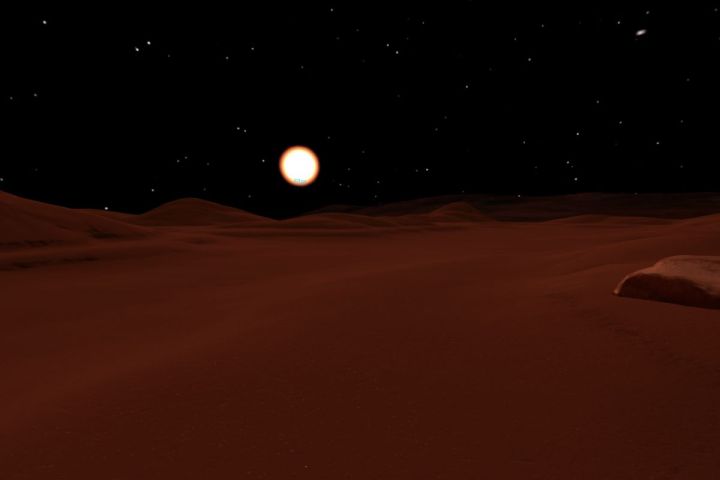
NASA has opened a new Exoplanet Travel Bureau, a place where you can journey through the cosmos and imagine what it might be like to stand on the surface of an alien planet.
The website offers an intergalactic vacation in the form of interactive visualizations of planets beyond our solar system. No actual images of these planets exist, of course, but the artistic conceptions are based on observations from the Kepler Space Telescope.
The 360-degree visualizations are available for desktop or mobile devices, as well as virtual reality headsets.
Accompanied by cool retro-style travel posters, there are three planets to visit, with more on the way. The “nightlife never ends” on PSO J318.5-22, because it doesn’t orbit a star, but wanders freely through space. The latest entry, Kepler-186f, has a setting that lets you toggle atmosphere on or off.
“Because Kepler-186f and the majority of Kepler-discovered planets are so distant, it is currently impossible to detect their atmospheres — if they exist at all — or characterize their atmospheric properties,” said NASA scientist Martin Still in a blog post.
“Consequently, we have limited knowledge about what these distant worlds are really like, but these surface visualizations allow us to imagine some of the possibilities,” he added. “Current and future NASA missions, including TESS and the James Webb Space Telescope, will find the nearest exoplanets to our solar system and characterize their atmospheres, bridging the gap between speculation and what’s really out there.”
The Travel Bureau was designed by NASA’s Exoplanet Exploration Program at the Jet Propulsion Laboratory in California.
Although hundreds of potential exoplanets have been discovered so far, scientists arte particularly intrigued by those in the “Goldilocks Zone,” the orbit in a temperature range that could support liquid water and, possibly, extraterrestrial life.
The Kepler spacecraft, which trails the Earth in an orbit around the sun, has produced most of the exoplanet discoveries, but it’s out of gas and about to end its mission. However, the just-launched TESS (Transiting Exoplanet Survey Satellite) and the upcoming James Webb Space Telescope are both specifically designed to search for exoplanets, and thousands of alien worlds await discovery.


